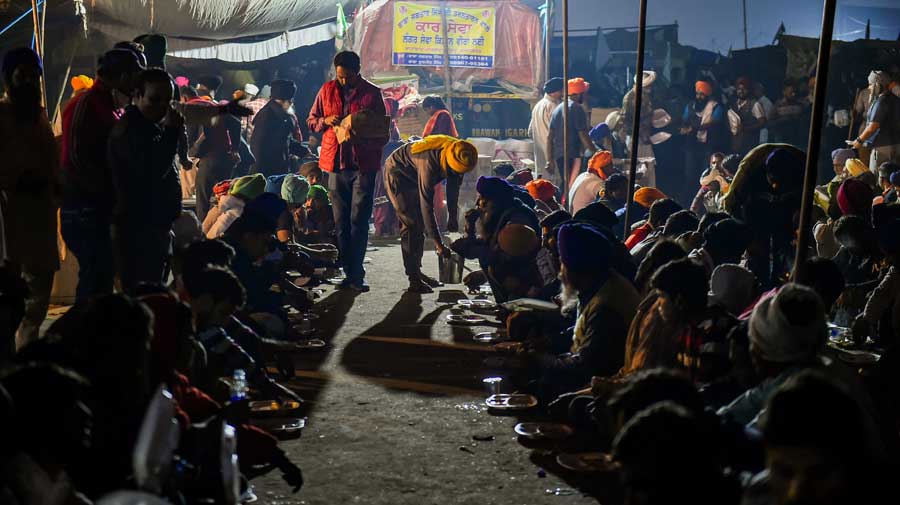My newly-wed grandmother was about my age when she crossed a river of blood, the deepest gash on the nation’s body politic, to start her life over in a new land. In my handed-down consciousness, I try and step into the worn-out shoes strapped loosely over her rose-dyed feet. I surreptitiously enter her mind to play out the exact thoughts that arose as she stood in a room full of belongings, suffering the malady of unprecedented indecision: what to take, what to leave behind.
In a different world, my eyes gloss over the room I come back to at the end of every day, the cupboard that holds my clothes, the table on which my laptop sits, the books on the shelf, a vanity full of objects I bought on a whim, and then I imagine them catch fire. On such an occasion, what would I save?
Of all the devastating stories that constitute Partition history, the one that stands out in my memory is of the moment my grandmother turned around to scan her home for the last time, hurriedly picked up the idol of the god she worshipped, and walked towards a future of uncertainty. For me, that final glance at the present helplessly dissolving into the past encapsulates the tragedy of migration.
In an environment of communal tension that prompted the migration of Partition victims like my ancestors, the singular act of reaching out for a god was, at once, a complex attempt to save one’s religion while also expecting to be saved by it. It is, in a sense, both a leap of and towards faith that, to an adolescent girl, was embodied in a brass idol. But how stable are the guard rails of faith when religion itself is affronted? How does faith then root the uprooted?
On December 11, 2019, as the Citizenship (Amendment) Act was passed, religion was invoked in India’s corridors of power, anticipating a similar fate of displacement for those unfavoured by authority. The voices that swelled in protest at Shaheen Bagh formed the node of a new faith. Although the fault lines of conflict had not changed since 1947, faith, as conceived in the nation’s collective imagination, had outgrown the individual’s prayer to become an insubstantial figure often misappropriated by demagogues. Faith at Shaheen Bagh was placed in a more accessible value of democracy, which the onslaught of strongman politics had seemingly threatened.
When faith contained by an institution has to endure the harshest of blows, a fortress is erected around it by its believers. Since it is difficult to articulate the essence of faith, the grip of its persuasion, or the verity of its claim, one can only perceive it as a force of humanity. Like energy, it is neither created nor destroyed, but it flows from one body to another through a network of shared experiences. Several strands of the strongest human subjectivities intersect at the experience of migration — the loss of identity, the reconstruction of memory, the re-evaluation of selfhood — all of which gain new meaning as one traverses the line between belonging and unbelonging.
Herein, faith totalizes the dissociation from the trepidation of migration. The rejection of one’s person from the womb of the land that had nurtured him/her can only be mitigated by an embrace of acceptance. The displaced open their arms to the world; faith is what receives them — not a crutch, but a refuge. In this context, one need not go too far back in time to recall the plight of migrant workers of India in the wake of the pandemic. As the government declared a lockdown without prior notice, little thought was spared for the daily wage earners working in different states left without the means to return to their villages.
As the migrants embarked on a journey whose end seemed unreachable, what fuelled their spirit? When democracy seemingly abandoned them, faith manifested in the memory of their homes. Some might have imagined it as the warmth of domestic bliss, others as the touch of the familiar ground under their feet: the soil that had birthed them and they wished their remains to return to.
With ideas of religion and the State being dangerously superimposed on each other, the definition of faith in one’s nation runs the risk of becoming amorphous. Curiously, in several regional languages of India, the word, ‘country’, translates to ‘des’. But ‘des’ by itself could mean one’s village or the nation at large. Therefore, unlike nationalism, faith betrays the limitation of borders.
Hence, faith is also solidarity. Like kinship, it is forged in a common furnace that feeds and sustains its believers. At the Singhu border where farmers have mobilized to protest against the three farm laws passed in Parliament without consultation, the protesters have come equipped with fragments of their hearth and homes to see them through their fight. I think of the langar that the farmers set up every day and the food that fills the stomachs of those who fill ours.
Such an image takes me back to my first visit to the Golden Temple at Amritsar where an old lady had placed on my palm a generous dollop of ghee-soaked, sweet halwa. Her head covered in a soft cotton cloth, grey strands of hair peeking from underneath, she reminded me of my grandmother. She could just as well be one of the women of Shaheen Bagh or a migrant mother waiting to be reunited with a child — each a victim of displacement, each a supplicant of faith.










